Earth-Our Shared Home NCERT Solutions | Our Wondrous World Class 5 - New NCERT PDF Download
| Table of contents |

|
| Page No. 162 |

|
| Page 164 |

|
| Page 165 |

|
| Page No. 167 |

|
| Page No. 168 |

|
| Page No. 169 |

|
| Page No. 170-172 |

|
| Page No. 173 |

|
| Pages No. 176 |

|
Page No. 162
Activity 1
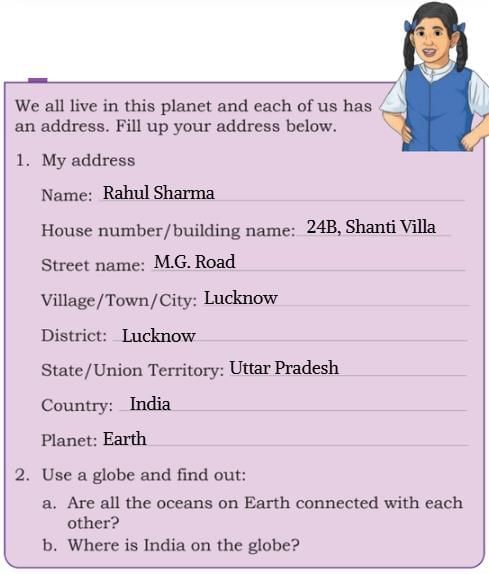
Q2. a. Are all the oceans on Earth connected with each other?
Answer: Yes, all the oceans on Earth are connected. The Pacific, Atlantic, Indian, Southern, and Arctic Oceans are joined together, forming a single, large world ocean.
b. Where is India on the globe?
Answer: India is located in South Asia, in the northern and eastern hemispheres. On the globe, you can find India between the continents of Africa and Australia, below China, and to the west of the Bay of Bengal and east of the Arabian Sea.
Page 164
Write
Q1. Does the rosy starling visit your area? What is it called locally?
Answer: Yes, the rosy starling visits many areas in India during winter. Locally, it is called "Gulabi Maina" (गुलाबी मैना).
Q2. What does this story tell us about nature?
Answer: The story shows how migratory birds connect ecosystems, help control pests, and the importance of respecting and protecting nature’s balance.
Page 165
Activity 2
Q1. Make a poster of 5 birds that visit your place in winter. Find out where they come from.
Answer: Birds poster: Include Flamingos (came from Siberia), Rose-ringed Parakeet (local), White-throated Kingfisher (partly migratory), Eurasian Skylark (from Europe), Rosy Starling (from Russia).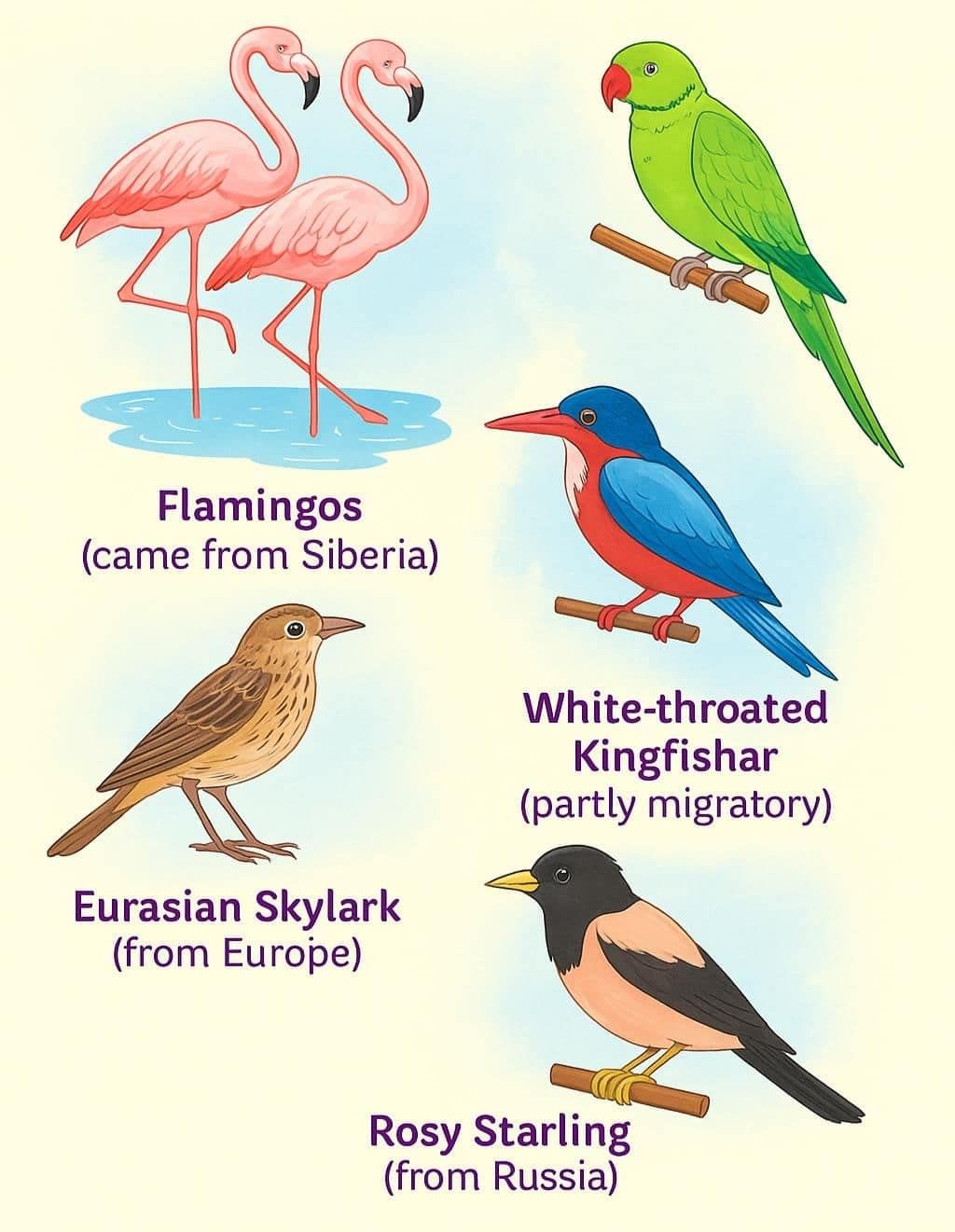
Q2. Using a string, trace the journey on a globe showing the paths rosy starlings take (Russia/Mongolia → India).
Answer: Students can watch the birders document birds' migration. Click here for Rosy Starling 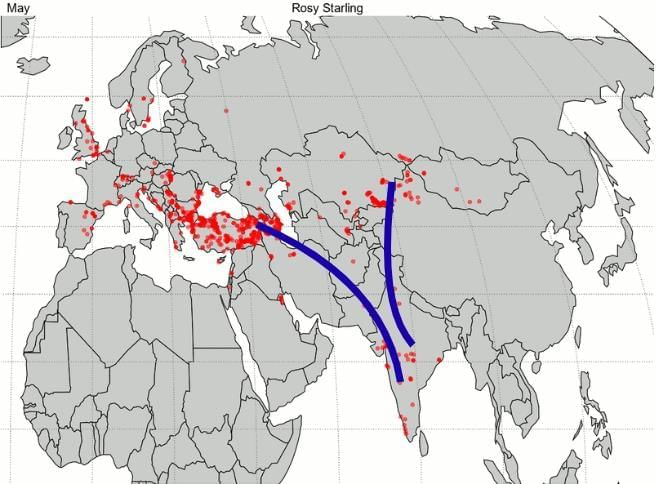
Q3. Imagine you are a bird travelling the world. Write a short postcard or note about what you see and what helps you on your journey (wind, ocean currents, warm weather). Share it with your classmates.
Answer: Postcard:
"Dear Friend, I am flying from the cold Siberian plains to warm India. The wind helps me glide, and I stop at beautiful places with food and safety. The warm weather in India feels like a welcome hug!"5 WINTER BIRDS.
Write
Q. What does it mean when we say 'nature has no boundaries'?
Answer: It means that natural things like air, water, clouds, seeds, and animals move freely across borders and countries without stopping. Nature connects all living things everywhere, ignoring human-made lines on maps.
Page No. 167
Discuss
Q. Why do you think yoga became popular in so many countries?
Answer: Yoga helps keep the body healthy and the mind peaceful. It's simple exercises and breathing make people feel relaxed and strong, which is why it has spread worldwide. Also, it helps everyone, young or old, and does not require special equipment.
Write
Q. Can you name a yoga pose you have tried or seen? What do you think it helps with?
Answer: Pose: Tree Pose (Vrikshasana).
Benefit: It helps improve balance and focus.
Page No. 168
Write
Q1. What would happen if chillies disappeared from our kitchens for a week?
Answer: Food would taste bland without the spicy flavour chillies provide. Many popular dishes would feel different and less exciting.
Q2. Ask your parents and write down the name of any recipe in which they have used black pepper and not red chillies.
Example Answer: Chicken stew uses black pepper for flavour instead of red chillies.
Activity 3
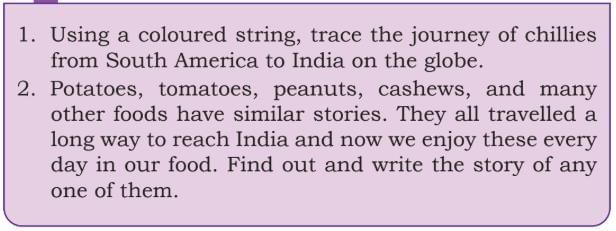
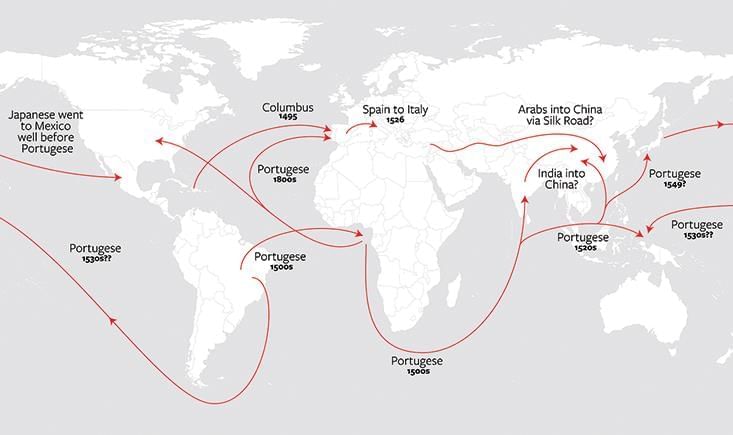
Example answer for Q2: A long time ago, potatoes did not grow in India. They first grew in South America. In the early 1600s, Portuguese traders brought potatoes to India, starting along the western coast, especially in the Malabar area. Later, when the British ruled India, they spread potatoes to other places, like the Nilgiri Hills in the south. At first, people thought potatoes might not grow well here, but they grew just fine in many types of soil and weather.
Potatoes became popular because they could be cooked in many ways, were easy to grow, and could be eaten by everyone, no matter their religion. Soon, they became part of many Indian dishes, like Bengal’s aloo posto and South India’s masala dosa.
Today, potatoes are grown all over India and are a big part of our daily meals. This story shows how a food from far away travelled across the world, was welcomed by farmers and cooks, and became a favourite in Indian kitchens.
Page No. 169
Discuss
Q1. If you could choose one Indian food to share with the world, what would it be?
Example Answer: Biryani, because of its rich flavours and unique cooking style.
Q2. What kind of new food items do you think will travel in the future?
Example Answer: Plant-based meat alternatives might travel more as people look for sustainable food.
Page No. 170-172
Write
Q1. Why do you think both Indian and Mexican cultures use marigolds during their festivals?
Answer: Marigolds are bright and colourful, which represent joy and celebration. Both cultures feel that these flowers bring warmth and happiness during special occasions.
Q2. Why do you think people in different countries include flowers in their celebrations?
Answer: Flowers add beauty and fragrance to celebrations and symbolise respect, purity, or spirituality.
Write
Q. What does this story tell us about animals moving from one place to another?
Answer: Animals like Indian cows can adapt to new places, and they can become very valuable in those countries. This shows how animals help different cultures connect and share resources.
Activity 4
Q1. With the help of your teacher or an elder, find out the names of at least 5 different breeds of cows.
Answer: Here are the names of at least five different breeds of cows that you can find out while asking your teacher or an elder: Gir, Sahiwal, Red Sindhi, Kankrej, Holstein, Tharparkar, Ongole, Hariana, Jersey, and Guernsey.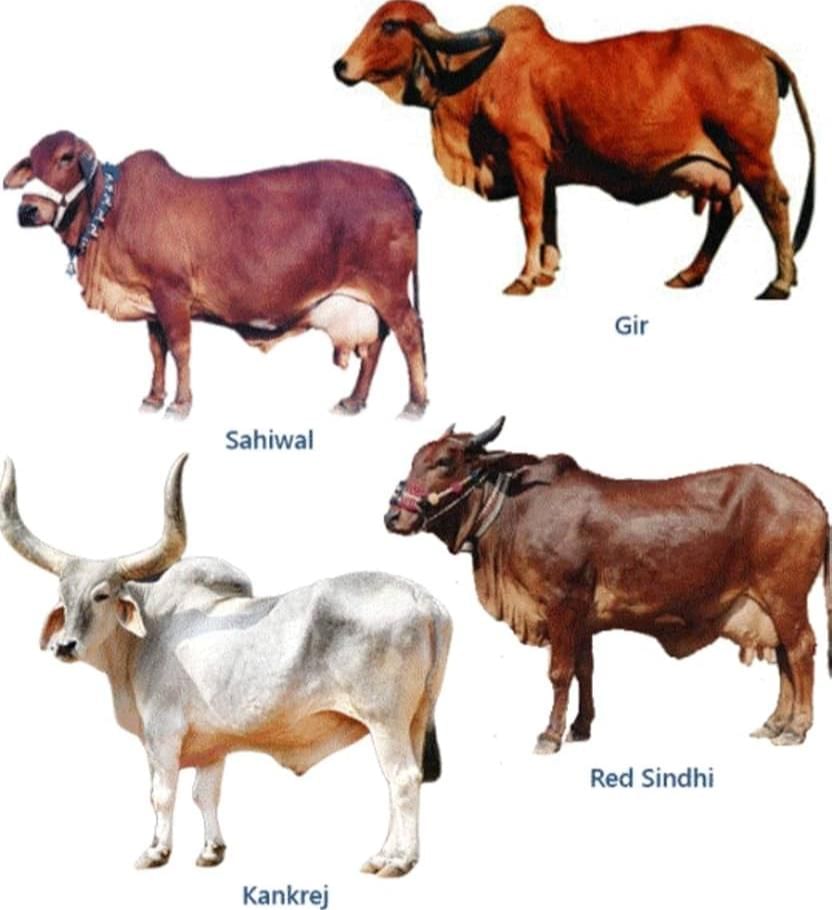
Q2. Make a list of a few things in your house or school that may have come from another part of the world. Find out where they originally came from.
Answer: 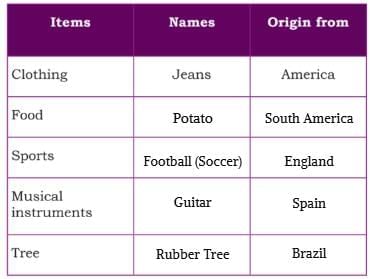
Page No. 173
Activity 5
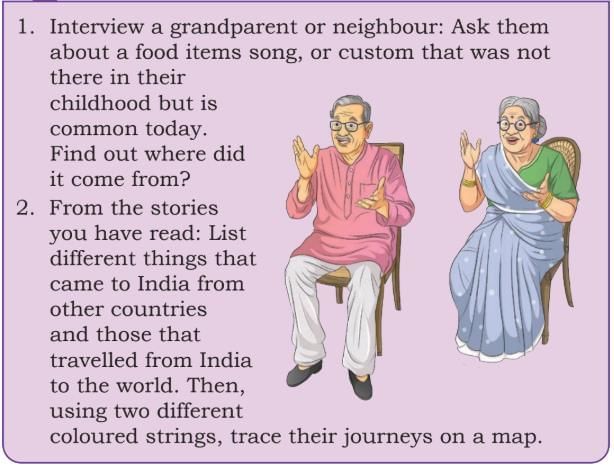
Example answer 1:
Grandmother said pizzas weren't available when she was young. They came from Italy and are now very popular in India.
Answer: To India: Chillies (South America), Potatoes (South America), Dates (Arabia)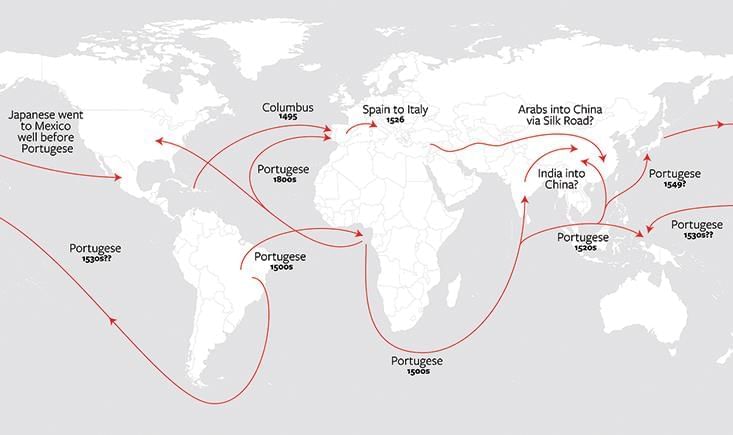
From India: Sugar (India → World), Yoga (India → World), Indian cows (India → Brazil)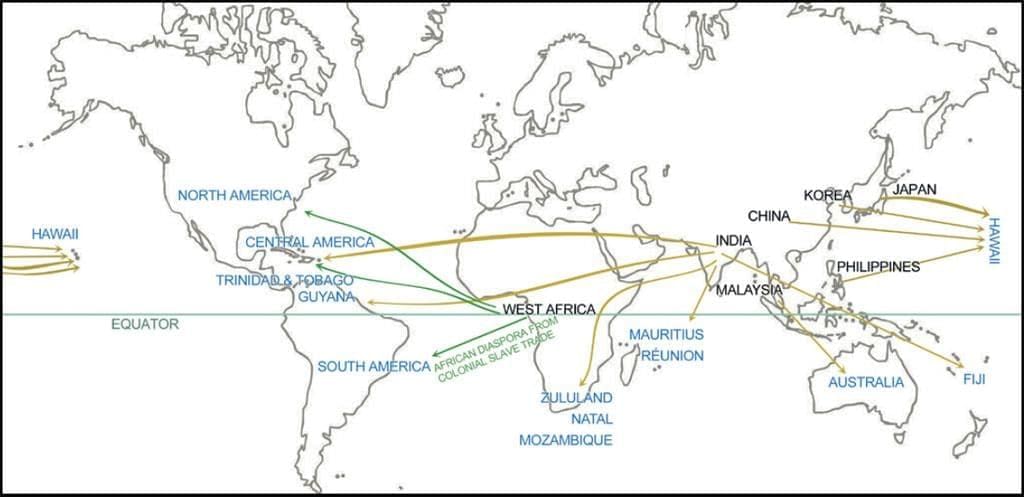
Pages No. 176
Write
Q1. What does Vasudhaiva Kutumbakam teach us?
Answer: It teaches us that the world is one big family, including all people, animals, plants, and nature. We should respect, care for, and live peacefully with each other.
Q2. Write the meaning of Vasudhaiva Kutumbakam in your own words.
Answer: The whole Earth and everyone on it are like one family.
Q3. How can we live like one big family, even when we are different?
Answer: By respecting differences, helping each other, sharing resources, and protecting the Earth.
Let us reflect
Q1. Pick one of the ideas. Write a short story about how this idea might have travelled from one place to another long ago. Think about how it helped people change their lives or the way they think.
Answer: Long ago, people lived in small groups, moving slowly and carrying heavy loads on their backs or with animals. One day, in a faraway land, someone noticed how a round log could roll more easily than being dragged. This idea led to the invention of the wheel.
The wheel slowly travelled from that place to others through traders, travellers, and explorers. As it reached new lands, people used wheels to build carts and wagons, making it easier to carry goods and travel longer distances. The wheel changed how people worked and traded by allowing faster movement of food, tools, and other things. It even helped invent other machines and later vehicles.
The wheel changed the way people think about transportation and work—it showed how a simple idea could solve big problems and connect communities.
Q2. Write one way you can care for the Earth.
Answer: You can care for the Earth by reducing waste. This means reusing things, recycling materials, and avoiding throwing away items that can be repaired or repurposed. By doing this, you help reduce pollution and save natural resources.
Q3. Identify one item that can travel from India to other parts of the world and write about it.
Answer: India is famous for its spices like turmeric, cardamom, and pepper. These spices have travelled from India to many countries over centuries through trade routes. They helped people in other places improve food flavour, preserve food, and even use spices in medicines. Indian spices changed cooking styles and health practices worldwide, connecting cultures and enriching diets everywhere.
|
11 videos|212 docs|10 tests
|
FAQs on Earth-Our Shared Home NCERT Solutions - Our Wondrous World Class 5 - New NCERT
| 1. What is the importance of Earth as our shared home? |  |
| 2. How can we contribute to saving the Earth? |  |
| 3. What are some major environmental issues facing Earth today? |  |
| 4. Why is it essential to learn about Earth and its features? |  |
| 5. What role do plants and animals play in maintaining the health of the Earth? |  |














